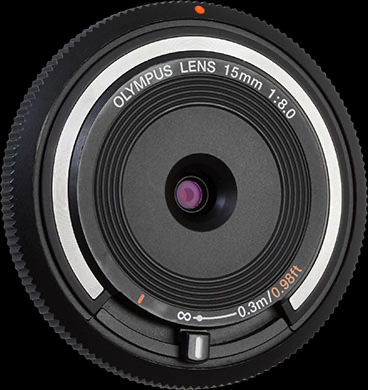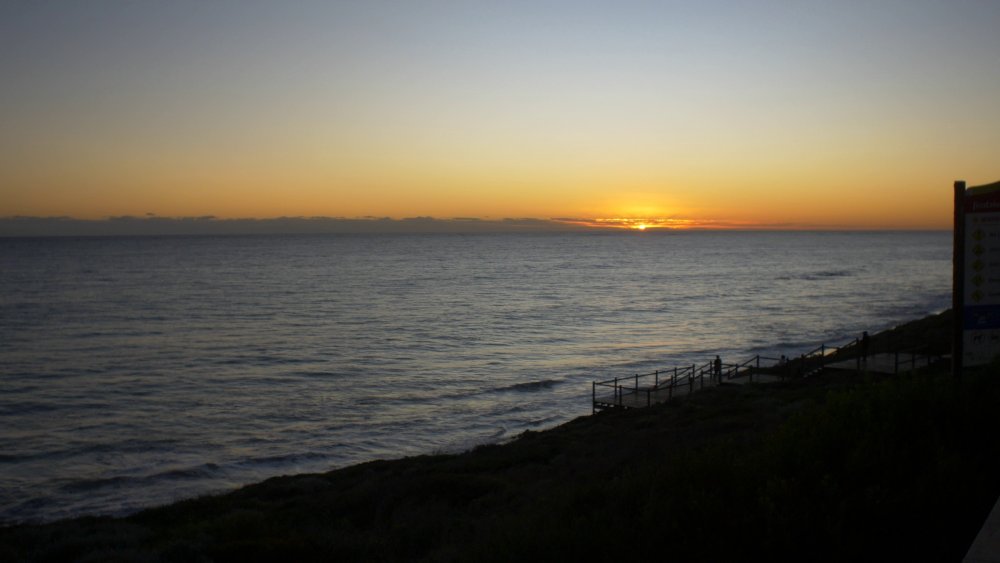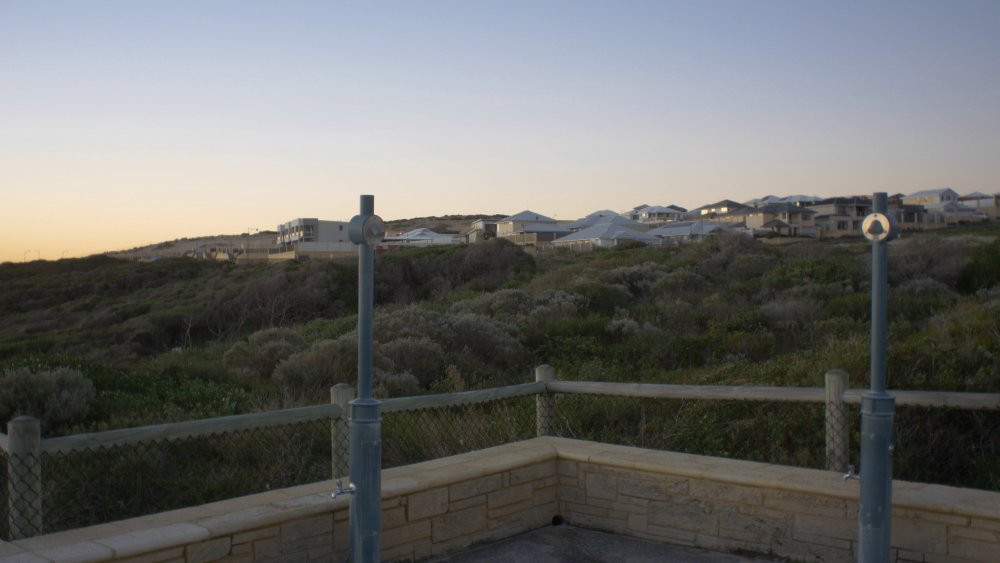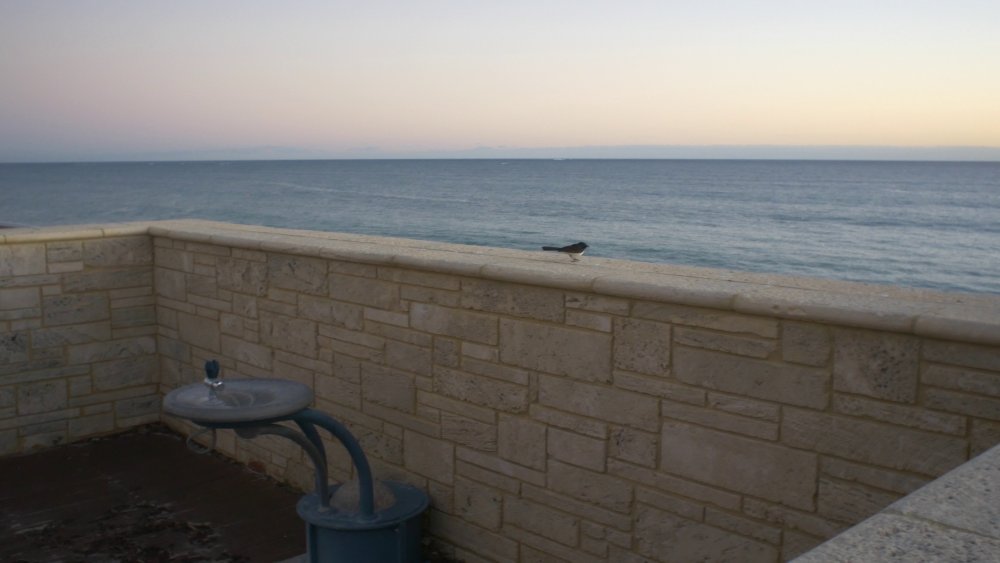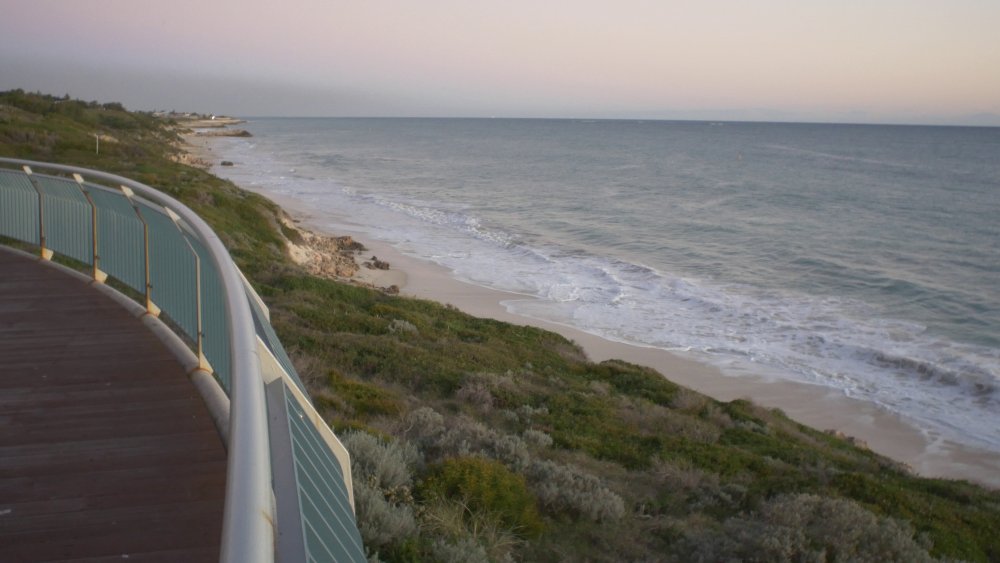-
Posts
7,835 -
Joined
-
Last visited
Content Type
Profiles
Forums
Articles
Everything posted by kye
-
Sometimes I think that learning is like an upward spiral. You look at some things, do some things, think about some things, then move on, and years later you find yourself looking back at the same things you were looking at before, but having learned a bunch of other stuff in the meantime often you can learn more the second (or third) time around. Or maybe it's just me being a little thick-headed! 🙂
-
Every shot taken is better than every shot not taken. This is really the strength of cameras the size of the GX85. Plus, not only is it small, it's got IBIS and half-decent 4K. Not that common in something so small.
-
This post says that the 28–80 f/3.5–5.6 USM is great and has a metal mount (or the first version has anyway). There's a couple of other lenses they liked too.
-
GX85 is a hell of a camera. Sell the S1 and invest back into the market when the time is right.
-
Looks nice, but not at all like BMMCC or OG BMPCC to me. Those cameras mimicked the resolution and texture and noise of film, but this is too clean and modern and high-resolution to really give me that cinematic feel. It is high-resolution, but it also LOOKS high resolution, which film never does, unless maybe you're talking 70mm or something, but that's not what I associate with cinema. The aesthetic of cinema to me is like a dream. Seeing actors on the big screen isn't real, it's not realistic, the stories and characters are not human beings - if you met the people in real life (or even see the actors being interviewed on TV) the illusion collapses into them being normal human beings, but that's not what cinema is, it's not how it feels. Modern cameras seem to be getting closer to the dynamic range of film, which can be very nice when graded well, but they're moving away from film with resolution and clean noise-free images, which ultimately make the images less cinematic overall. I think all the people on here who think that 4K can be cinematic (without enormous degradation in-post) have forgotten what film actually looks like, what cinema feels like. That's fine - not everything needs to be cinematic - the market demands what it demands and that's fine, but it doesn't matter if you acclimate to something different (sterile ultra-resolution images) the subconscious still knows and it still misses the mark even if you're not aware of it consciously. We don't want consistency - in 1400ad there was consistency about the shape of the earth (flat) - we want a time-lapse video of the camera recording in a temperature-controlled cabinet.
-
Nice! I saw those articles with it on Halo and that's the perfect use-case for it in high-end productions. Hopefully word spreads and Sigma starts to get a presence in that niche. For me it's the image and the dynamic range that is just soooo tempting despite being a poor fit for my use-case (hand-held travel style in purely available light). I'm still actively looking at their firmware updates, hoping that they'll drop some more goodies in there. Otherwise maybe an FP mk2 will come and deliver some of the holes in the mk1. If it had Prores, a tilting screen and some kind of stabilised options for standard focal lengths (other than the 24-104/4) then the sheer image quality would get me to swap brands and sensor sizes, not an easy feat considering I can see 5 MFT cameras from where I'm sitting, plus a tray-full of lenses!
-
Thanks! I've noticed a huge difference in 'feel' when colour grading between the GH5 and the BMMCC, with the BMMCC just doing exactly what you wanted it to and the GH5 colour feeling like it was arguing against me all the time. This was between the GH5 in 150Mbps 4K or 200Mbps 1080p vs the BMMCC in Prores HQ (~176Mbps 1080p) so it's not a RAW vs compressed issue. What are your impressions of colouring the GH5 vs GH6 footage? Does the GH6 feel nicer to colour grade? It was kind of hard to quantify, but when I pushed the BMMCC footage around (warmer, cooler, greener, more magenta, etc) it just did what you'd expect - it felt simple, whereas with the GH5 it felt like some parts of the image would do the right thing but others wouldn't - like it was complicated and resisting and squirming, and basically the colour turned to shit pretty quickly. This might have been related to not getting the WB correct in-camera? I would imagine that a proper implementation of V-Log in the GH6 would help in the grading experience, and I'd imagine that any sufficiently skilled colourist could probably get good results from either camera, but for us not-so-good colourists I'm wondering if there will be a difference in difficulty where the GH6 is easier to grade than the GH5 footage? I'm also keen to hear your impressions of the h264 vs h265 vs Prores codecs, including the analog vs digital aspects of the aesthetic they each have. I'm imagining that the Prores would have a nicer noise floor for example, more like film than digital.
-
I understand that h265 can do 12-bit and ALL-I, so why not give us a 12-bit ALL-I mode with V-Log? I mean, if we're talking about what can be done vs what a commercial company would actually do...
-
In terms of audio, further to @IronFilms comment about getting the mic closer, is the arrangement of any sound treatments or room elements that absorb sound (such as soft-furnishings, curtains, etc). The closer that a wall is to the talent the more you'll get that wall reflecting sound back to the mic, but throw an acoustic blanket up on a couple of c-stands and you should be fine - most YT studios will have acoustic blankets hung up just out of shot to minimise room response and reflections.
-
Absolutely. I think unless you've done it, you really don't know how stretched and fast that video work requires sometimes. I shoot home and travel with zero direction and no retakes, and even I wouldn't suggest I understand the full experience of a wedding gig, especially when mixing stills and video! The other factor about having bodies with the same mount/crop is the redundancy factor. If you have a FF lens stop functioning then replacing it with a S35 one further complicates everything, if it's even possible. I've got an MFT based system and have worked out a kit that includes backups of almost everything, but involves using the backup camera as a second/third camera in some situations. If my two bodies had different crops/mounts then my kit would be a lot larger and heavier to keep that level of backup functionality. I can't imagine what it's like dealing with clients (let alone bridezilla) if you had an equipment failure and had a compromised ability to get the shots you need! You're suggesting a career change from solo-shooter to management. Navigating all the perils of managing staff, being an employer / dealing with other contractors and their own schedules etc, dealing with no-shows / sick days / poor skills / "artistic differences" etc... let alone navigating all those and still making a profit on each job. The wedding shooters I've seen (those that actually run real businesses - eg Scott McKenna) basically say that the amount of work and learning curve for hiring one person (or coming to have your business rely on services that require another contractor to deliver) is so large that you should only do it if your plan is to scale the business to the point where you're not shooting, you've got half-a-dozen crews going each weekend, and your exit strategy is to sell the business in a few years and pocket the money.
-
It could also MF in AF - if you wanted it to go in a certain direction or to change the subject of focus a spin of the MF ring would tell it to go in that direction and choose a new subject. It was a good camera for certain things, I think that what I tried to use it for was just waaaay outside what it was designed for.
-
Yes, I agree about it being a team effort. I think the main thing is Auteur Theory (https://indiefilmhustle.com/auteur-theroy/) which is the culprit and has perpetuated, especially around directors who were popular when the theory was popular. I can understand the rationale for it, being that the director is sort of the head of the creative side of the film (as opposed to the Producer being head of the logistical side of the film), and it could be argued that the director makes the single largest contribution creatively, but that doesn't mean that they're the only ones that contribute. Yet another example of humanity trying to over-simplify something just because they don't like how complicated it is!
-
Yeah, I read a number of articles that talked about films shot on only one lens and one of the favourites was the 24-28mm on S35 combo, which was a ~35-40mm equivalent. It's wide enough to get a wide, but not so wide that it distorts too much on close-ups, so it's a good middle-ground if you're only going to use one lens. I ended up settling on 16mm, 35mm, 85mm equivalent focal lengths for my own work, and that was before I really read a lot about lenses and understood the implications around them. The 35mm focal length is great for environmental portraits, which is perfect for the work I do (family and travel) which is primarily about my family and friends being in and interacting with interesting places. The 85mm focal length is a great second option as it can give the impression of being far away. So a wide on an 85 seems very distant emotionally, a mid at 85 seems like a normal gaze at a normal distance, and a close-up at 85 indicates a combination of being relatively close physically with a very very keen interest emotionally (intense focus on that person). It's a great compliment to the wide/mid/close emotions you get from a 35mm.
-
The deep DoF on the xc10 was definitely a downside, but perhaps an even larger downside was the autofocus performance. If anyone thinks that Panasonic auto-focus is bad then their brain will literally melt if they ever saw what a truly bad AF looks like. Using the camera was a joy, punctuated with regular occurrences of the AF messing up a shot and it was so slow and traumatising it was like watching a car accident in slow motion. You would literally be screaming at the camera inside your head, and several sentences would pass that way before it locked focus - often well and truly after the moment had passed and the shot was already lost. I didn't tend to notice that in real life TBH, and I shot in all kinds of conditions using auto-ISO and hand-held. The way people talk about it I would have thought that I'd have shot after shot after shot ruined but I don't think I ever noticed it. I definitely noticed indoor shots that had heaps of noise, so I definitely used it in situations where the ISO noise degraded the image severely. I always used the camera on full-auto and I know that the lens wasn't parfocal but IIRC Canon mapped the lens and when you changed the focal length it adjusted the focus on the fly to maintain the same focus distance, so if you zoomed at a slow-medium pace then it would feel like a parfocal lens. I mention that because I don't think I ever noticed it change exposure when I zoomed either, so maybe it was compensating for that in some way too. Still, if you shot with it manually it would have been an issue.
-
I was surprised that it had enough exposure as I have told myself this is a "outdoors during the day" lens, but on closer inspection I think the ISO was working a bit on the images so it's not the best choice for post-sunset. One thing that got me a couple of times on the previous shoot (with the GF3) was that putting it into my pocket seems to adjust the focus to the "closed" position and pulling the camera out of my pocket seems to adjust the focus to the 0.3m position, so that's a trap for new players. Still, when I'm shooting MF with the GH5 focus is always a thing to adjust so I just have to keep that mindset that it's a manual lens and needs to have that attention too. I am contemplating doing a sharpness test of various cameras and lenses and I think that this lens might actually be in the sweet spot of sharp but not too sharp. I'm optimistic for that, plus the size is incredibly convenient. Your analysis is terribly kind in ways that I probably don't deserve, but I'll take it - thanks!! I like to think I have pretty good composition but to be honest I've been shooting for long enough that I don't really even think about it that much anymore, and my mental effort is more around anticipating what is about to happen. For example, with the bird shot, I was thinking that: the bird was chasing bugs and spent most of its time off-screen frame-right and down below the edge of the wall if I moved the camera to the right then that's where the sun was setting and the auto-exposure would be slow to react and would clip the sky, which isn't a good look on the GX85 (even in Cine-D) I don't know enough about bird behaviour to read it's body-language so I can't tell what it's doing, plus if it spots a bug then it all changes in an instant I could make a half-decent shot if it darted off frame-right by starting to follow it, stopping short of the clipping point of the camera, letting it leave frame, and then me lingering in an odd composition telling a little story of interaction and abandonment between the bird and the film-maker, but also giving me the opportunity to cut earlier than that and to just have a bird shot without the little drama Then I just went through the shots in VLC and found a good moment and did a screen grab, based mostly on instinct. In terms of light - I'm reminded of that old saying in film photography - "F8 and be there" 🙂 The lens isn't fixed focus, but it might as well be. It's got a little focus slider on the front that closes a little lens cover, and has stops for infinity and 0.3m (12inches). You can position it anywhere in-between, but you'd really be guessing... Theoretically you could manually focus with it, using peaking or whatever, but the DoF is super deep so it would be difficult to really nail the right distance. If you set it to 0.3m it certainly blurs the background though. This is a shot from the GF3 video I filmed the previous day with the lens set at 0.3m: It's got good flaring characteristics too (that's the sun in the background) but isn't so modern that it's clinical. I shot a few test shots of RAW still images on the GF3 and at 12MP (4K) it was pixel sharp, so it's a pretty decent performer and priced very reasonably (I think) for what you get. Yeah, I'd be inclined to summarise the shot more like "the shot of the bird flying around" rather than what @PannySVHS said!! 🙂
-
I've seen multitools feature fairly steadily in the "things I carry all day as a film-maker" type articles/videos. D4darius did a great video that talks about his setup.. he uses a chest bag with heaps of pockets...
-
Thanks, that what I thought you meant and what it would be. It would obviously be nicer if it could tilt through 180 degrees (straight up to straight down) while in-line with the lens, and then the normal 270 when flipped out to the side, but I'm used to the GH5 screen which you have to flip around to at least 90-degrees before it can be rotated to face up or down. I don't use it for selfies (I think I tried it a couple of times, but nah...) so for me it's like @Kisaha said - low angle where you are looking straight down or high angle where you are looking straight up (as well as train shots lol). I've gotten quite a number of nice shots by using that high angle approach. Sometimes I'm tall enough that at zoos I can get the camera higher than the glass barriers and so can get a reflection-free shot, or avoid some other barrier or other. The XC10 really was great for standing behind the camera. The ergonomics and layout etc were all exactly what you'd want. Canon sure know how to make a cinema camera.
-
If you are ok with cropping then going wider will give you more options. One thing to be aware of with cropping in post is that you frame up properly while shooting for that crop. I have lenses that vignette and so I have to crop in post, but while I'm shooting I don't think about it (composition is quite an automatic thing for me these days) and so when I go to crop in post I am cutting people's heads off left and right and things all go sideways basically!
-
I think it's like anything else, it's new and could be mis-used so it gets locked down much more than other things. You don't have to look that far to see that the world is full of risks of all kinds, but the amount of effort put into preventing these risks from occurring is vastly different between them, and often has no bearing on the level of risk that is actually present. It's based on public appetite and apathy as to which things get looked at and which things get left alone.
-
According to one article it said that Hitchcock preferred 50mm, which on S35 would be ~80mm FF. The 15mm on the GX85 in 4K mode is about a 2.2x crop factor, so around 33mm equivalent. Maybe it's the contrast or the colour perhaps?
-
Speaking of great colour.... great colour! Things like this just make me more motivated to practice my colour grading and develop my skills. Every time I fire up Resolve and do some colour grading I can feel that I'm getting just a little bit better. Both in seeing and noticing things, and also in being able to make the colour how I want. While I was watching it I kept thinking of the FD and then thinking it was a Canon camera, but a G6 - that makes it all the more impressive! 🙂
-
Thanks!! That's the second grade I did on that little edit. The first was with a 250D 2393 PFE film emulation combo, and it well and truly broke the image! Especially in the sky, it really exposed the jagged compression artefacts. So I re-did the grade manually, dealing in a number of adjustments that are similar to a film emulation (including things like lowering the luma of saturated colours, etc) but limiting them to juuuuust before the image broke. I think I've worked out that the GF3 is basically the digital equivalent of the 8mm film camera when film was in. It's not sharp, hasn't got leading image quality, hasn't got stabilisation (except if you put a huge lens on it), and is full-auto, but is small and fun to use and gives a very "amateur" aesthetic.
-
Just popped out down the beach and discovered that fashionably late isn't a thing with sunsets. Good thing I'm not fashionable enough to have been that late, but also not early enough either. Here are some ungraded frame grabs from the GX85 and Olympus 15mm F8 pancake lens, which fits nicely in the jeans pocket. @webrunner5 I seem to remember you were keen on this lens? It sure is sharp and relatively distortion free... it's just not, well, fast! These are 4k grabs, so click on them to see the full quality. I don't know what ISO the GX85 was at, but the images don't look too bad for F8 and after sunset.
-
I'm confused. I was talking about screens that are flat against the back of the camera unless they are flipped out to the side where they can then rotate to face up and down. For example, this is the GH5 mk2: It cannot be tilted up or down while remaining in-line with the lens. This is the type of screen that is required to shoot sideways, like this: A screen that only tilts in-line with the lens cannot be seen from the side: ...and seeing the screen from the side is required for shots like the train one, where it's not possible to stand in-line with the lens because you'd be standing outside the train. I know you don't like the flippy screens, but you said "They can also be flipped out sideways and used for no reason known to man in that manner." and I am telling you that I use it in that manner from time to time, and in those situations it's the only way to get the shot (and be able to see your composition while recording).
-
Hmm, that's not what I would hope for. How far does it tilt down? Oh, and how far does it tilt up and down when also flipped out to the side? I shoot high and low angles frequently and am looking at the camera from almost directly above or underneath.




